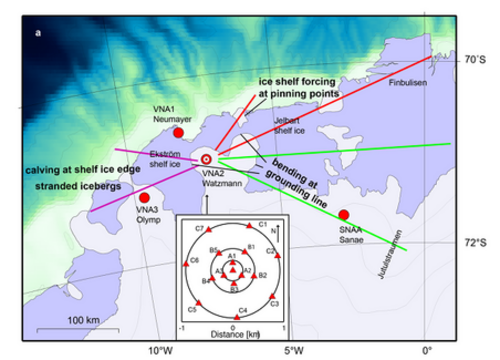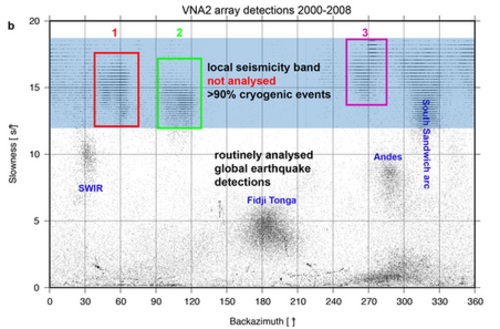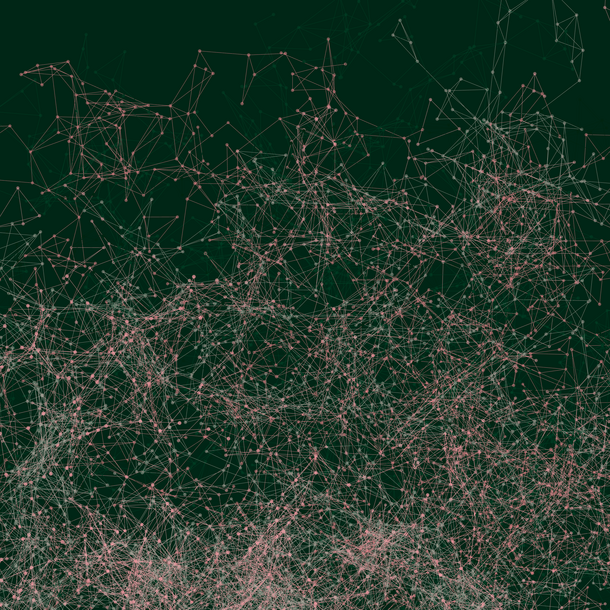Monitoring a stressed ice shelf: Machine learning algorithms to detect icequakes in 20 years of seismological records at Neumayer station, Antarctica
Doctoral Researcher:
Louisa Kinzel, Center for Industrial Mathematics, University of Bremen, lgranzow@uni-bremen.de
Supervisors:
- PD Dr. Vera Schlindwein, Alfred Wegener Institute - Helmholtz Centre for Polar and Marine Research, Bremerhaven, vera.schlindwein@awi.de
- Prof. Dr. Dr. h.c. Peter Maaß, Center for Industrial Mathematics, University of Bremen, pmaass@math.uni-bremen.de
- Dr. Tanja Fromm, Alfred Wegener Institute - Helmholtz Centre for Polar and Marine Research, Bremerhaven, Tanja.Fromm@awi.de
Location: Bremen/Bremerhaven
Disciplines: seismology, applied mathematics, computer science
Keywords: ice shelf dynamics, icequakes, machine learning, numerical algorithms
Motivation: The young and rapidly evolving discipline of cryoseismology exploits icequakes to monitor the impact of the globally warming climate on ice sheets. The geophysical observatory at Neumayer Station, Antarctica has recorded a time series of over 20 years of seismological data, which includes not only earthquakes, but also icequakes caused by the surrounding ice dynamics. Routine observatory processing has not analysed cryogenic events, because they are far too numerous for manual analysis. To tap this valuable seismological data reservoir and uncover changes of the coastal ice shelf environment over the past two decades, we need efficient algorithms that can automatically detect and classify icequakes. Modern machine learning techniques are in principle able to discriminate between earthquakes and icequakes (Hammer et al. 2015), but they were developed for tasks in computer vision with millions of data sets for training. In almost all other applications - including this project - well annotated training is rare. Hence, we need to tackle a 'small data' problem in a big data environment.
Directional detections of the Neumayer network. Detections from short distances (blue band) are not routinely analysed due to missing discrimination tools between icequakes and earthquakes.
Aim: To circumvent this, this PhD project will apply techniques from transfer learning and so called active learning strategies, where the algorithm determines during training those data sets, where detailed annotation is required. For the task of discriminating between different seismic events, the project will build on recent developments for deep learning applied to inverse problems (Arridge et al. 2019). With this approach, the PhD candidate will develop a fast and efficient algorithm to reanalyse the lifetime dataset of the Neumayer geophysical observatory and to operate on the real-time data stream. The resulting consistent catalogue of cryogenic events then allows monitoring any changes in the stress state of the coastal shelf ice over time.
Objectives: (1) Develop an algorithm for automatic detection and discrimination of icequakes, (2) Apply to Neumayer seismological archive, (3) Statistically analyse temporal variations in icequake occurrence.
References:
- Arridge, S., Maass, P., Öktem, O., Schönlieb, C. (2019). Solving inverse problems using data-driven models, accepted for publication in Acta Numerica, Cambridge University Press.
- Hammer, C., Ohrnberger, M., and Schlindwein, V. (2015). Pattern of cryospheric seismic events observed at Ekström ice shelf, Antarctica, Geophysical Research Letters, 42(10), 3936--3943, doi:10.1002/2015GL064029.










